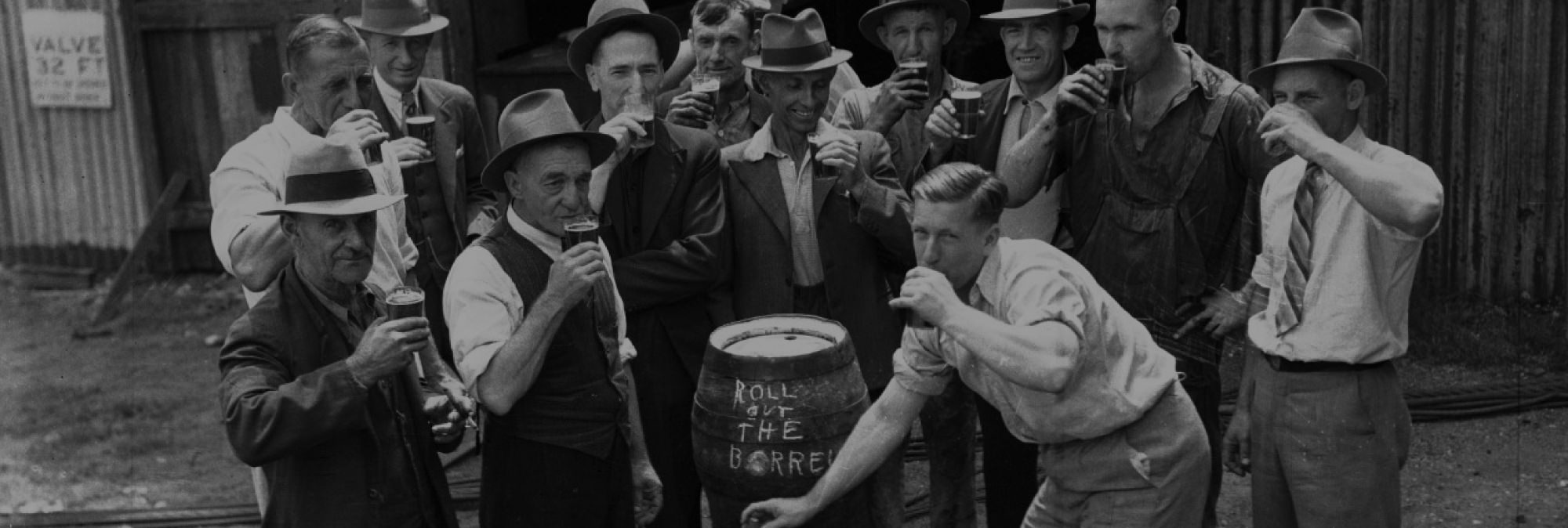The Last Word
The Rise of Craft Beer

Ale wasn’t always this cool. In years gone by, it meant old casks, dreary pubs and names like ‘Cheeky Snifter’. Nowadays, craft ale has completely reimagined the way we view the humble pint, leading us to prioritise flavour and experimentation instead of reaching for the same old pint of standard lager.
For this week’s Last Word, we take a look at the story behind the craft beer explosion, and the British breweries giving their American cousins a run for their money.
Craft Ale in Britain: A HistoryFor decades, the majority of us drank beer produced by a handful of companies. Heineken and Carlsberg had a monopoly on the beer we drank in the UK, with very few bars or pubs serving anything else.
Meanwhile on the West Coast of America, something special was happening. Since the 1970s, microbreweries had become incredibly popular, creating strong, great-tasting beers from simple local ingredients.
India Pale Ales - or IPAs for short - were at the centre of this burgeoning scene. Sierra Nevada and Anchor Steam were bringing IPAs to the masses, but actually the origination of the IPA started with the Brits. During the days of the British Empire, troops stationed in India had a hankering for beer, but the climate was too hot to brew it. Instead, a beer that could withstand the gruelling six-month journey halfway around the world was required.
London brewers found that by adding extra hops to their beers, they lasted significantly longer and tasted even better due to the aging. It was through this necessity for British troops to have a refreshing pint that the IPA was born.
By the late 2000s, Brits had begun to grow tired of the poor choices they were being served. Trailblazers across the country, inspired by the Trappist beer scene in Europe as much as the aforementioned West Coast movement, began to open specialist craft beer pubs such as North Bar in Leeds, importing interesting beers from across the world and teaching Brits that there’s more beer than a 4% lager.
This approach snowballed, and soon the length and breadth of the country was full of expert bars giving drinkers the chance to sample porters, saisons, sours, and everything in between.
Not content with simply buying in the best beer from across the globe, Brits soon began to craft it themselves, using local ingredients to ensure fans of the new scene were able to sample the freshest, hoppiest beers around. By 2016, there were over 1,600 breweries in the UK, with brewers experimenting more and more with new and exciting flavour combinations.
Let us highlight just three of our favourites.
CloudwaterThe current daddies of the UK craft beer scene. Manchester-based Cloudwater has taken the country by storm since its inception in 2014, with its heady 9% DIPA’s becoming collectors items with the beer scene. Focusing on seasonal brews, Cloudwater is a favourite of the biggest beer aficionados due to its open approach to brewing and commitment to experimentation.
Try…NW DIPA Ekuanot (9%) - a perfectly medley of hops including Citra and Simcoe to create a knockout signature IPA.
Northern Monk Brew Co.Leeds’ Northern Monk is another craft brewery growing fast. From its Grade II listed brewery and tap room on the outskirts of the city centre, the brewery is responsible for some of the country’s most popular beers of recent years.
Try…Neopolitan Pale (5.9%) - that’s right, a beer that tastes exactly like your childhood favourite neopolitan ice cream. It shouldn’t work, but it really, really does.
Verdant Brewing Co.Beginning as homebrewers, in no time at all Verdant has graduated into one of the names on the UK beer scene.
Try…Pulp Double IPA (8%) - ever so slightly lighter than Cloudwater’s take on this popular beer style, Pulp is dangerous drinkable, with its mango and grapefruit notes creating an incredibly quaffable beverage.



